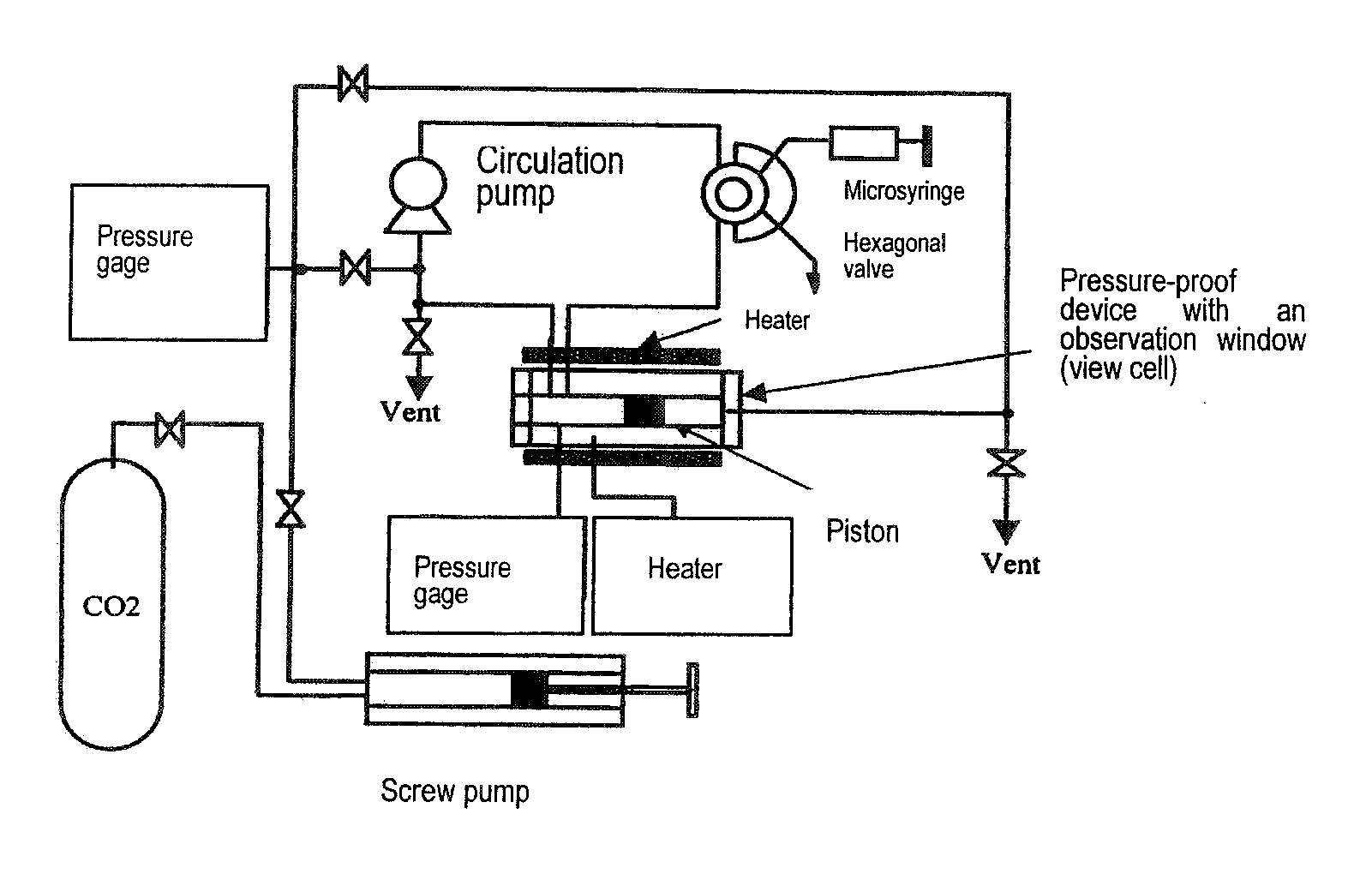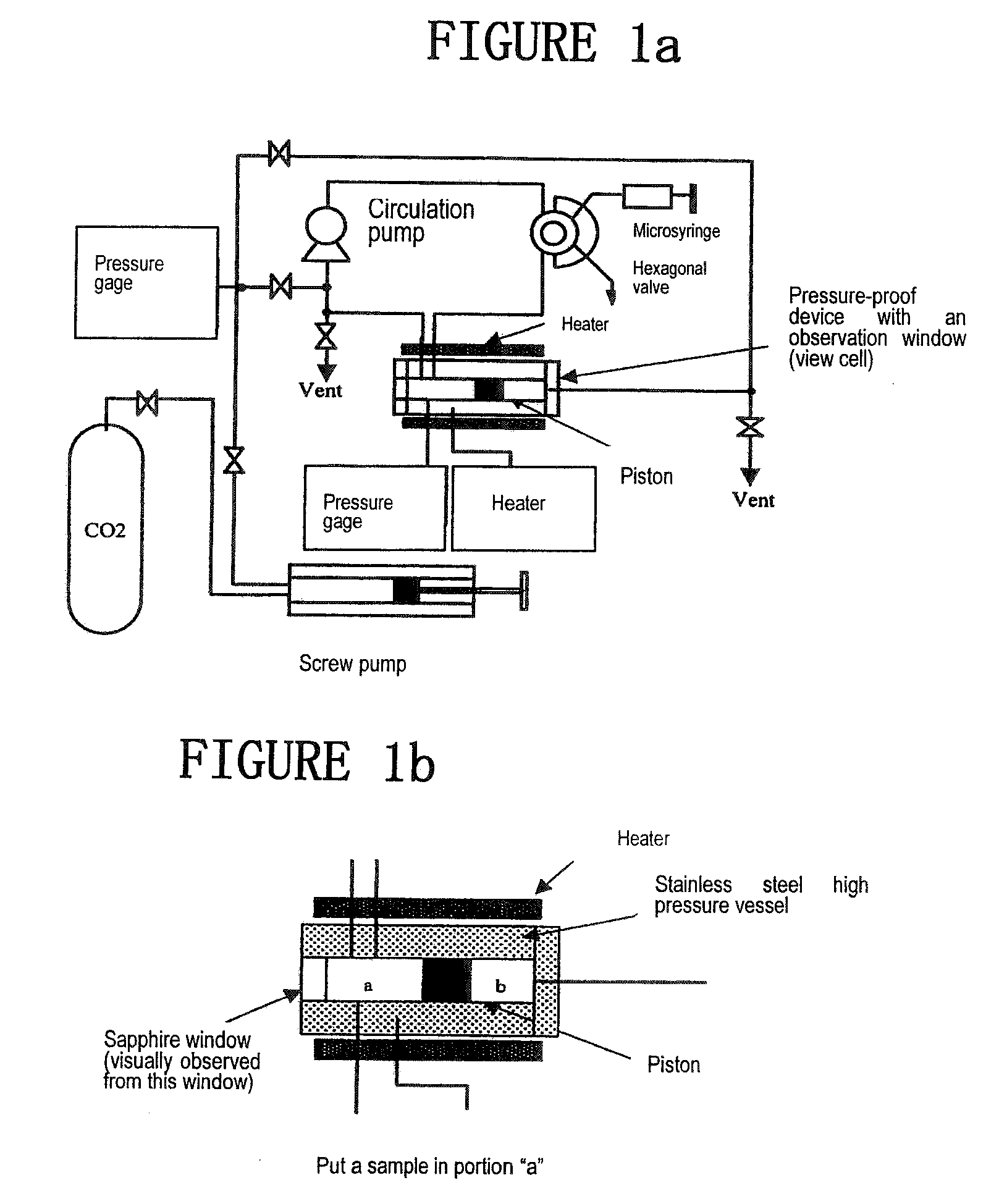Branched Surfactant Having Fluoroalkyl Group And Hydrocarbon Group
- Summary
- Abstract
- Description
- Claims
- Application Information
AI Technical Summary
Benefits of technology
Problems solved by technology
Method used
Image
Examples
examples
[0076] Hereinafter, the present invention will be described with reference to Examples and Reference Examples in detail, but is not limited thereto.
(A) Surfactants Having a Sulfonate Group (r=0 in Formula (I))
examples 1a to 5a
[0077] Following the description of Japanese Unexamined Patent Publication No. 1976-32322, compounds 1A-5A were synthesized.
[0078] The physical properties of the obtained compounds are as follows:
1A: C6F13CH2CH2OOCCH(SO3Na)CH2COOC6H13
[0079] Colorless and amorphous:
[0080]1H-NMR (CD3OD): δ 0.90 (t, J=6.9 Hz, 3H), 1.19-1.50 (m, 6H), 1.50-1.75 (m, 2H), 2.45-2.79 (m, 2H), 2.93-3.27 (m, 2H), 4.00-4.22 (m, 3H), 4.34-4.50 (m, 2H).
[0081] IR (KBr, cm−1): 2968, 1740, 1241, 1209, 1146, 1033.
2A: C6F13CH2CH2OOCCH(SO3Na) CH2COOC8H17
[0082] Colorless and amorphous:
[0083]1H-NMR (CD3OD): δ 0.94 (t, J=7.3 Hz, 3H), 1.27-1.50 (m, 10H), 1.50-1.73 (m, 2H), 2.45-2.80 (m, 2H), 2.94-3.38 (m, 2H), 4.00-4.20 (m, 3H), 4.33-4.50 (m, 2H).
[0084] IR (KBr, cm−1): 2969, 1737, 1241, 1146, 1054.
3A: C8F17CH2CH2OOCCH(SO3Na) CH2COOC10H21
[0085] Colorless and amorphous:
[0086]1H-NMR (CD3OD): δ 0.89 (t, J=6.8 Hz, 3H), 1.15-1.45 (m, 14H), 1.50-1.75 (m, 2H), 2.45-2.79 (m, 2H), 2.94-3.27 (m, 2H), 4.02-4.22 (m, 3H), 4....
example 1b
1B: C8F17CH2CH(OSO3Na) CH2OC8H17
[0108] A mixture of heptadecafluoropropylene oxide (1.09 g, 2.3 mmol), octanol (1.02 g, 7.8 mmol), and one drop of sulfuric acid was heated at 100° C. for 48 hours under stirring. The result was extracted with ethyl acetate, and the organic layer was washed with saturated aqueous sodium bicarbonate and brine. The washed matter was dried with magnesium sulfate, and the solvent was then distilled off under reduced pressure. The reactant obtained was isolated by silica gel column chromatography (n-hexane: EtOAc=30:1), yielding an alcohol compound (830 mg, 60%). To the alcohol compound obtained was added a SO3—Py complex (416 mg, 2.6 mmol). The mixture was stirred in 5 ml of pyridine at 40° C. for 24 hours. The reactant was placed in saturated aqueous sodium bicarbonate, and heated to dryness. Inorganic salt was removed from the remaining reactant by extraction with acetone using a Soxhlet extractor, yielding compound 1B (730 mg, two steps, 45%).
[0109] ...
PUM
| Property | Measurement | Unit |
|---|---|---|
| Temperature | aaaaa | aaaaa |
| Temperature | aaaaa | aaaaa |
| Mass | aaaaa | aaaaa |
Abstract
Description
Claims
Application Information
 Login to View More
Login to View More - R&D
- Intellectual Property
- Life Sciences
- Materials
- Tech Scout
- Unparalleled Data Quality
- Higher Quality Content
- 60% Fewer Hallucinations
Browse by: Latest US Patents, China's latest patents, Technical Efficacy Thesaurus, Application Domain, Technology Topic, Popular Technical Reports.
© 2025 PatSnap. All rights reserved.Legal|Privacy policy|Modern Slavery Act Transparency Statement|Sitemap|About US| Contact US: help@patsnap.com



